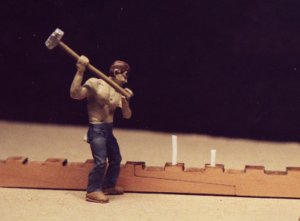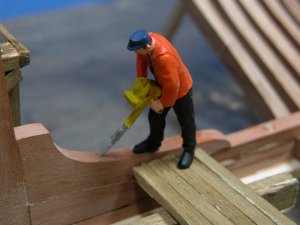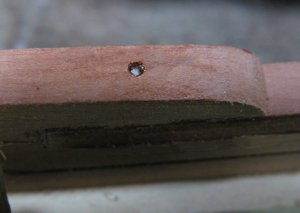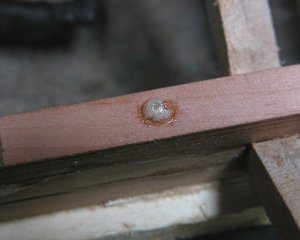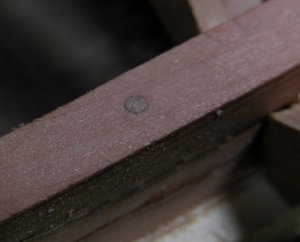At 1:100 scale the spikes would have a head of about 0.005"/0.006", so very fine. You could try very fine brass wire with a touch of blackening solution on the head - at this scale you probably wouldn't see the lack of a dome. If you were desperate to see them domed, you can buy cup-head burrs to go in a drill, doming the top before you push them in.
Notwithstanding the above, I would strongly urge caution, and think whether you really want to try spiking at this scale - you could end up with a model that looks totally overwhelmed by fastenings, whereas spikes and trennels should fade from sight at 3 or 4 feet distance.
Make up a test panel of planking and try different techniques on that before you commit yourself to doing it on the ship.
Ted
Thanks Ted. A threshold for how visible certain sized iron nails needs to be figured out or the model's appearance will be overly cluttered with dots. There is also the danger of splitting the walnut wales which are only 3mm wide, and that would just do damage. Also, pre-drilling doubles the amount of work. No easy solution. Using the shanks of brass pins for only the largest iron nails (the ones in the wales) seems to be the way to go. The nails in the planking are just too small. I wonder if a micro sized punch that leaves ring impressions in the wood could achieve a nice effect, sort of like a nail set, but much smaller. Time to experiment!




